If you’re thinking about adding an orchid to your home, or if you already have one, this ultimate guide will teach you everything you need to know about these amazing flowers. From watering and fertilizing to potting and repotting, we’ve got you covered with this ultimate guide. So let’s get started!
Orchids are one of the most popular houseplants around, and the reason is obvious. They’re beautiful and come in a wide range of colors, sizes, and shapes, and they can bloom for months at a time.
If you’re thinking about getting an orchid, there are a few things you should know before you buy one.
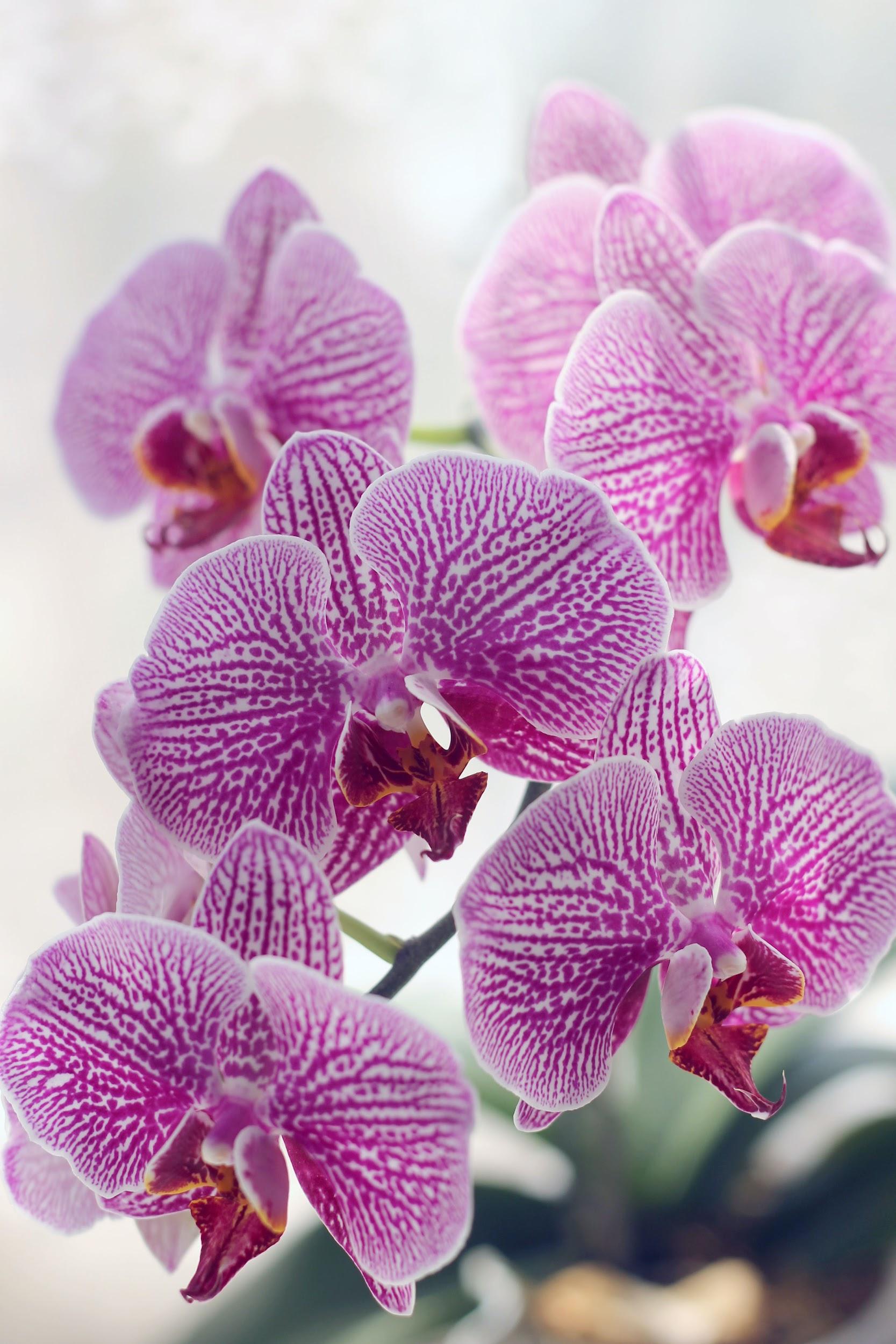
Credit: Pexels
There are two main types of orchids: terrestrial and epiphytic. Terrestrial orchids are the ones you’re probably most familiar with; they grow in soil, just like other houseplants. Epiphytic orchids, on the other hand, grow in tree bark or on rocks, and they don’t need soil to survive.
One of the main factors to remember is that orchids like bright, indirect light. So, if you can, set your plant near a window that gets plenty of sunlight. But don’t put it in direct sunlight, as this can scorch the leaves.
When it comes to watering, orchids are pretty drought-tolerant. That is, you don’t need to water them very often; once a week should be sufficient.
The Different Types Of Orchids
Orchids come in many different shapes and sizes. They can be found in all different colors, too. Some orchids have just one color, while others have many colors.
The most common type of orchid is;
- The phalaenopsis, or moth orchid. It’s often found in stores, and requires low maintenance.
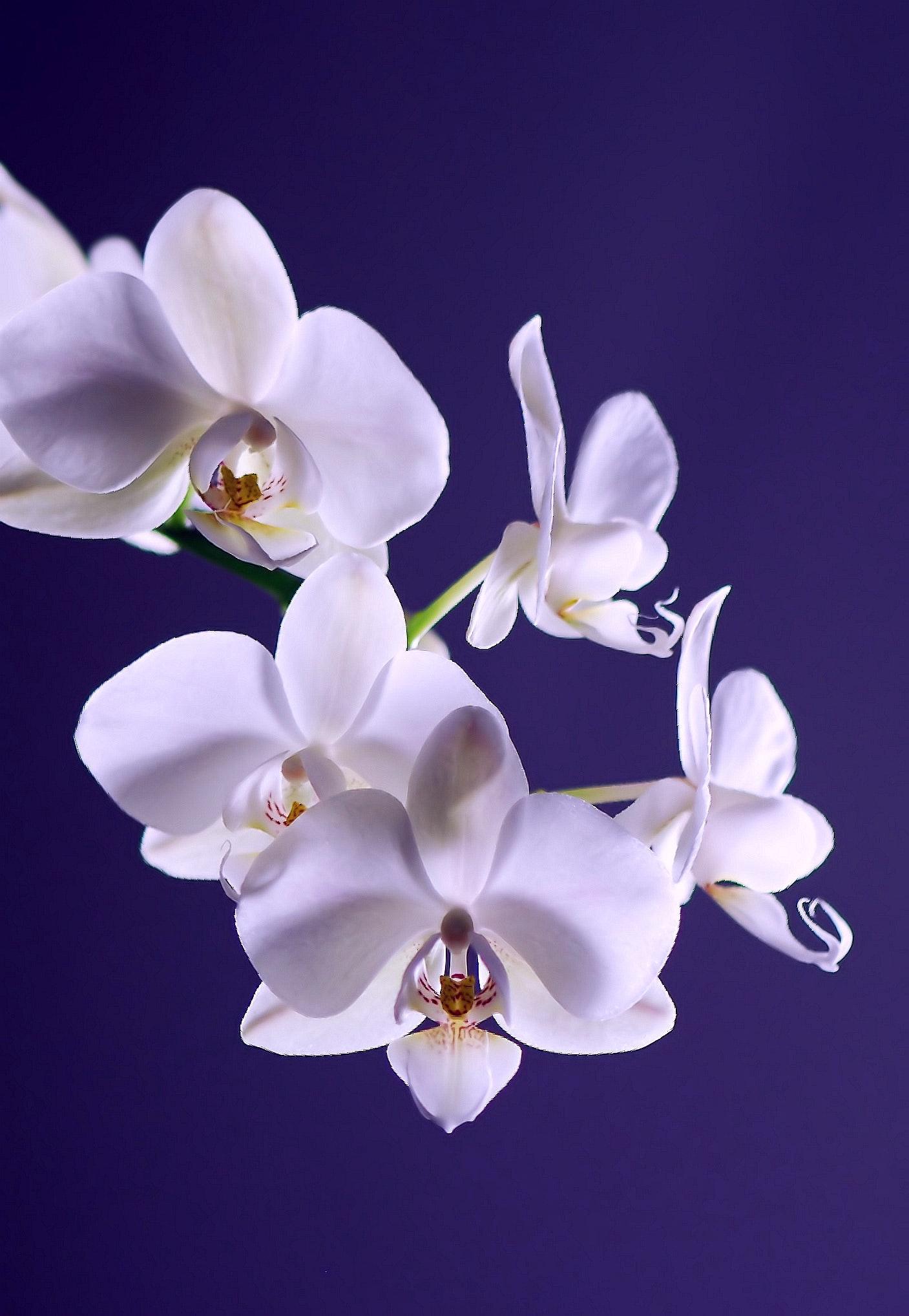
Credit: Pexels
Other popular types of orchids include
- The cattleya, dendrobium, oncidium, and vanda. These orchids are often used in breeding, as they can produce some very beautiful hybrids.
If you are looking for an easy-to-care-for orchid, the phalaenopsis is a good choice. If you want to try something a little more challenging, one of the other popular types of orchids might be a good option.
The Benefits Of Orchids
Orchids are a beautiful and popular flower, but did you know that they also have many benefits? Here are some of the top benefits of orchids:
- Orchids can help purify the air.
- They act as mood boosters to improve your mental well-being.
- Orchids can help reduce stress and anxiety.
- Likewise, Orchids can improve the quality of your sleep.
- In case you need an indoor plant to promote your focus, Orchids are effective.
- They can boost your immunity.
- Orchids can help fight off colds and flu, relieve pain and prevent cancer.
- Overall, Orchids help to promote healthy skin.
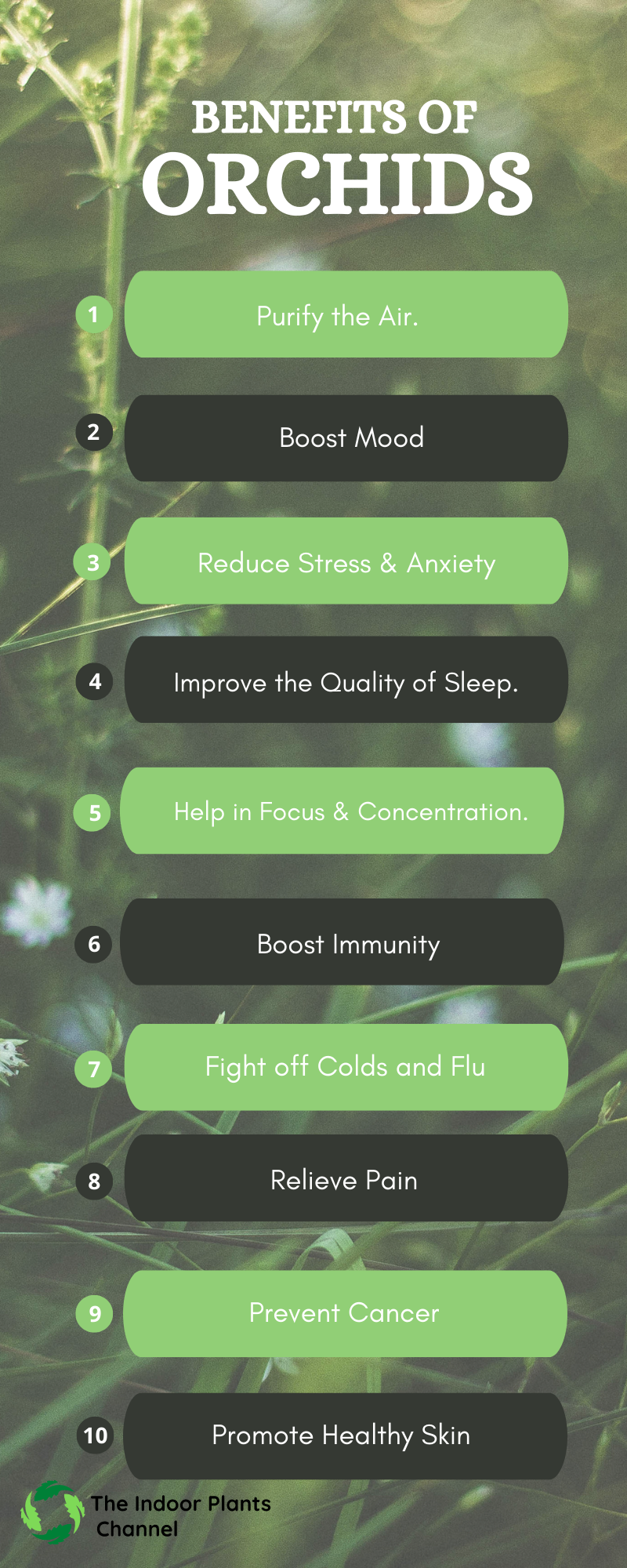
The Best Orchids For Beginners
If you’re looking for the best orchids for beginners, you can’t go wrong with Phalaenopsis orchids. Also known as moth orchids, these beautiful blooms are relatively easy to care for, making them a great choice for those just starting out with orchids.
Caring for Phalaenopsis orchids is relatively simple.
- They prefer bright, indirect sunlight and should be watered about once a week.
- Be sure to allow the potting mix to dry out in between waterings, as too much moisture can lead to root rot.
- These orchids also benefit from being fed with a balanced fertilizer every other week during the growing season.
With proper care, Phalaenopsis orchids can bloom for several months at a time.
If you’re looking for a long-lasting bloom, consider an Oncidium orchid. Also known as dancing lady orchids, these flowers can bloom for up to three months with the right care.
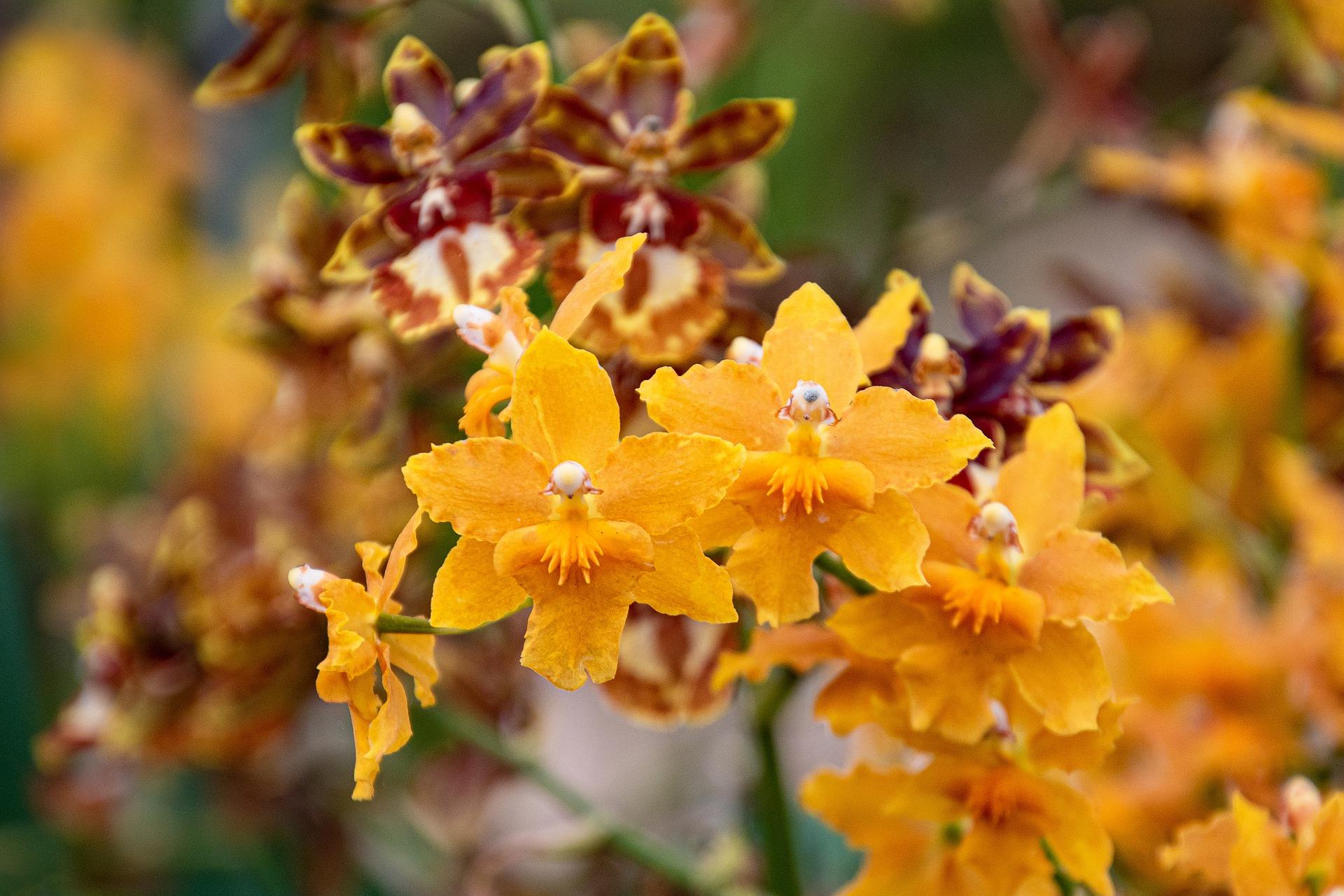
Credit: Pixabay
Caring for Oncidium orchids is similar to caring for Phalaenopsis orchids.
- They prefer bright, indirect sunlight and should be watered about once a week.
- Always allow the potting mix to dry out in between waterings, as too much moisture can lead to root rot.
- The orchids also benefit from being fed with a balanced fertilizer every other week during the growing season.
With proper care, Oncidium orchids can provide you with beautiful blooms for months at a time. Thus, if you’re looking for an easy-to-care-for orchid that will bloom for a long time, consider Oncidium orchids.
The Perfect Orchid Potting Mix
It is often said that the best way to grow healthy and vibrant plants is to start with good soil. In order to have a healthy Orchid, it is important to start with a good potting mix.
There are a few things to consider when choosing a potting mix for Orchids.
The mix should be well-draining, yet hold moisture well. It should also be lightweight and airy. A good potting mix will also provide nutrients to the plant.
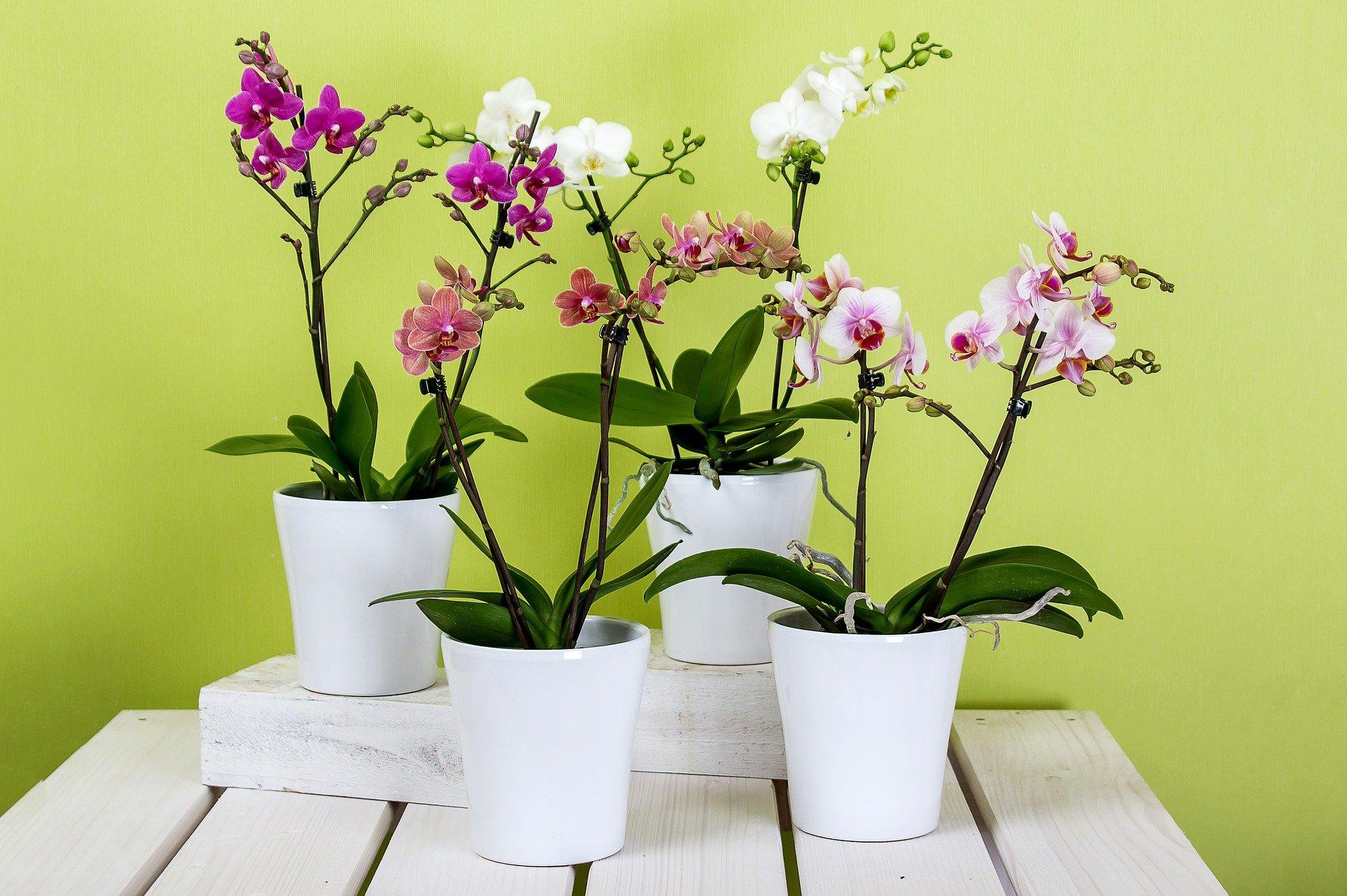
Credit: Pixabay
There are many commercial potting mixes available that will work well for Orchids. However, it is also possible to make your own potting mix. A good recipe for a homemade Orchid potting mix is:
- 1 part perlite
- 1 part sphagnum moss
- 1 part bark
When potting an Orchid, be sure to use a pot that has drainage holes. The roots of the Orchid need to be able to dry out quickly, so that they do not rot. It is also important to water the Orchid regularly, but allow the potting mix to dry out between waterings.
Orchid Watering Tips
It is important to water your orchid regularly, but it is also important not to overwater it. The best way to water your orchid is
- Water in the morning so that the plant has time to absorb the water during the day.
- Water the plant until the potting mix is moistened, but not soggy. Allow the plant to dry out slightly between watering.
- Generally, you should water your orchid once a week. However, you may need to water more often if the plant is in a pot without drainage holes or if the weather is hot and dry.
- If you are not sure whether your plant needs water, check the potting mix. If it is dry several inches below the surface, then it is time to water the plant.
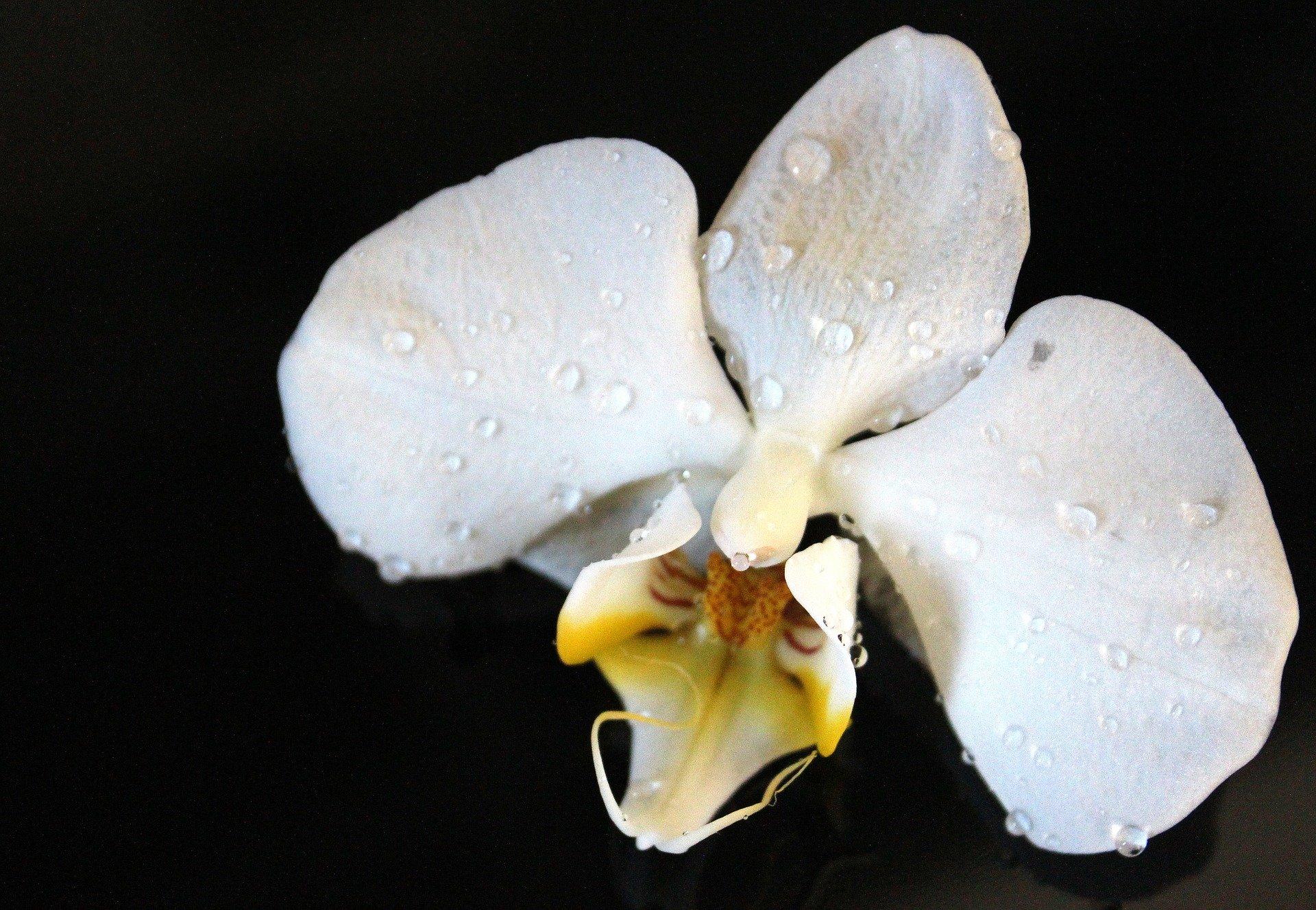
Credit: Pixabay
To water your orchid, you can use a watering can with a long spout or a watering wand. Make sure that the water you use is room temperature or cooler. Hot water can damage the roots of the plant.
If you want to fertilize your orchid, you can use a water-soluble fertilizer. Apply the fertilizer to the potting mix, not the leaves of the plant. Fertilize your orchid every two weeks during the growing season.
Orchid Fertilizing Tips
When it comes to orchids, fertilizing is key to keeping them healthy and vibrant. But with so many different products on the market, it can be tricky to know which one to choose. Here are a few tips to help you select the right fertilizer for your orchids:
- Consider the type of orchid you have.
Different types of orchids have different fertilizer needs. For example, epiphytic orchids (which grow on trees or other objects) need less fertilizer than terrestrial orchids (which grow in the ground).
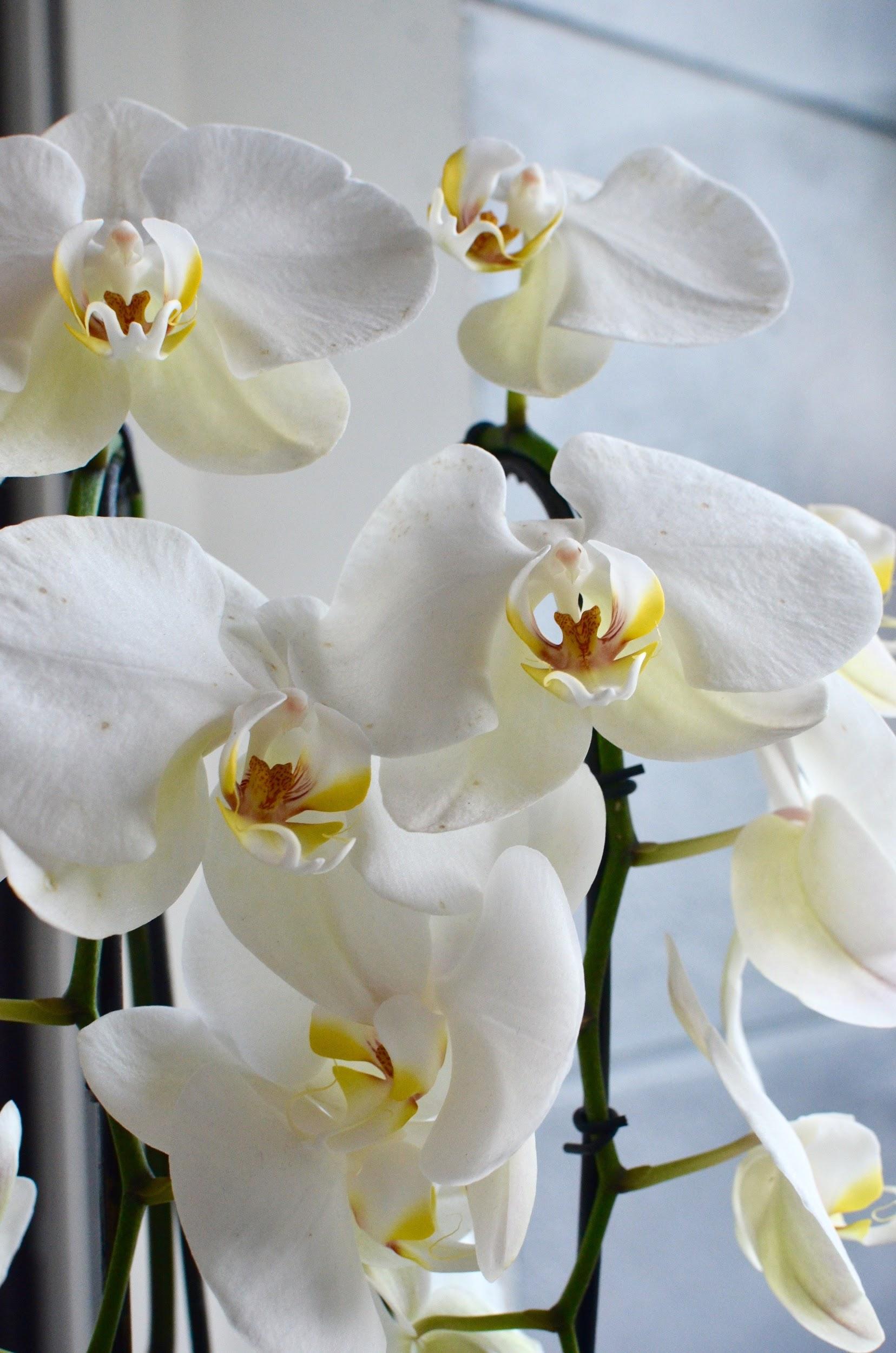
Credit: Pexels
- Look at the ingredients in the fertilizer.
For orchids, you want a fertilizer that is high in phosphorus and low in nitrogen. This will help promote blooming.
- Choose a fertilizer that is specifically designed for orchids.
These products will contain the right balance of nutrients that orchids need.
Orchid Pests And Diseases
Orchids are susceptible to a variety of pests and diseases. Some of the most common include aphids, mealybugs, scale, spider mites, and thrips. These pests can cause damage to the leaves, stems, and flowers of the plant.
- Aphids are small, soft-bodied insects that feed on the sap of plants. They are typically green or black in color and can be found on the undersides of leaves.
- Mealybugs are small, wingless insects that are covered in a white, waxy substance. They feed on the sap of plants and can cause damage to the leaves and stems.
- Scales are small, hard-bodied insects that feed on the sap of plants. They are typically brown or black in color and can be found on the undersides of leaves.
- Spider mites are small, eight-legged creatures that feed on the sap of plants. They are typically red or green in color and can be found on the undersides of leaves.
- Thrips are small, winged insects that feed on the sap of plants. They are typically black or brown in color and can be found on the undersides of leaves.
To prevent or control pests and diseases:
- It is important to keep your orchids clean and free of debris.
- Inspect your plants regularly for signs of pests or diseases. If you see any, remove them immediately.
- Disinfect any tools or materials that come into contact with the affected plant.
- You can also use a variety of chemical and biological controls, such as insecticidal soap, neem oil, and beneficial insects.
How To Propagate Orchids
There are a few different ways that you can propagate orchids.
Division
This is where you divide the plant into two or more parts. First, you will need to first find a healthy plant. Once you have found a healthy plant, you will need to carefully divide it into two or more parts. Make sure each part has at least one pseudobulb and one leaf. You can then pot each part up in its own pot.
Seed
You propagate the orchids from their seed.
Tissue culture
This is when you grow the plant from a tissue sample. To propagate by tissue culture, you will need to first find a healthy plant. Once you have found a healthy plant, you will need to take a tissue sample. Then, you will need to grow it in a lab.
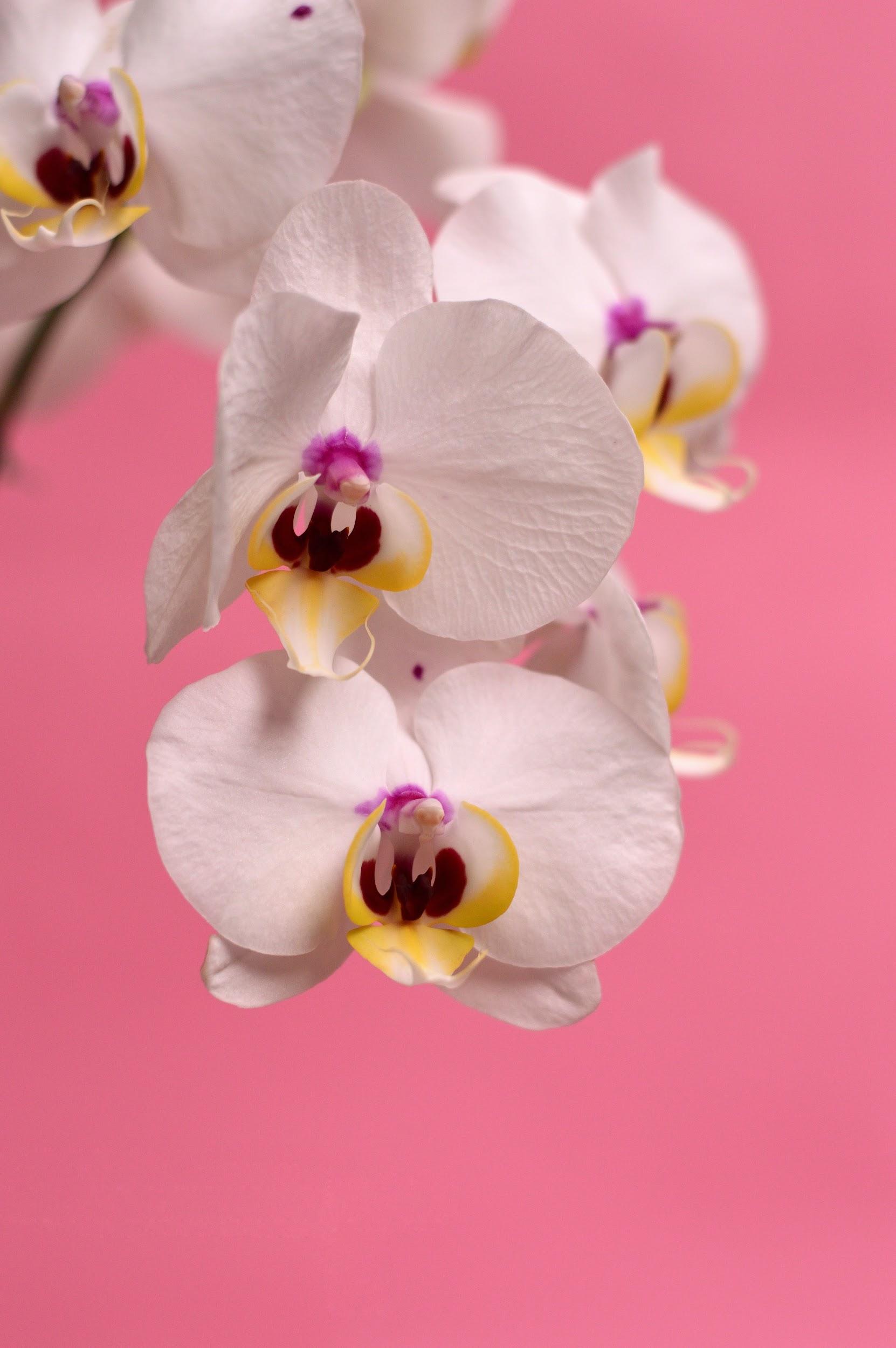
Credit: Pexels
Orchid Flowering Tips
If you want to have healthy and beautiful orchids, there are a few things you need to do. Here are some tips on how to flower your orchids:
- Give them plenty of light. Orchids need at least 12 hours of light each day in order to bloom. If you can, put them near a south-facing window.
- Keep them warm. Orchids like it warm, so try to keep the temperature around 70 degrees Fahrenheit.
- Water them properly. Orchids like to be kept moist, but not wet. Water them about once a week, or when the potting mix feels dry to the touch.
- Fertilize them. Orchids need to be fertilized every month or so. You can use a special orchid fertilizer, or a general purpose fertilizer diluted to half strength.
- Re-pot them every year or two. Orchids like to be snug in their pots, so they will need to be repotted every year or two. Be sure to use a potting mix that is designed for orchids.
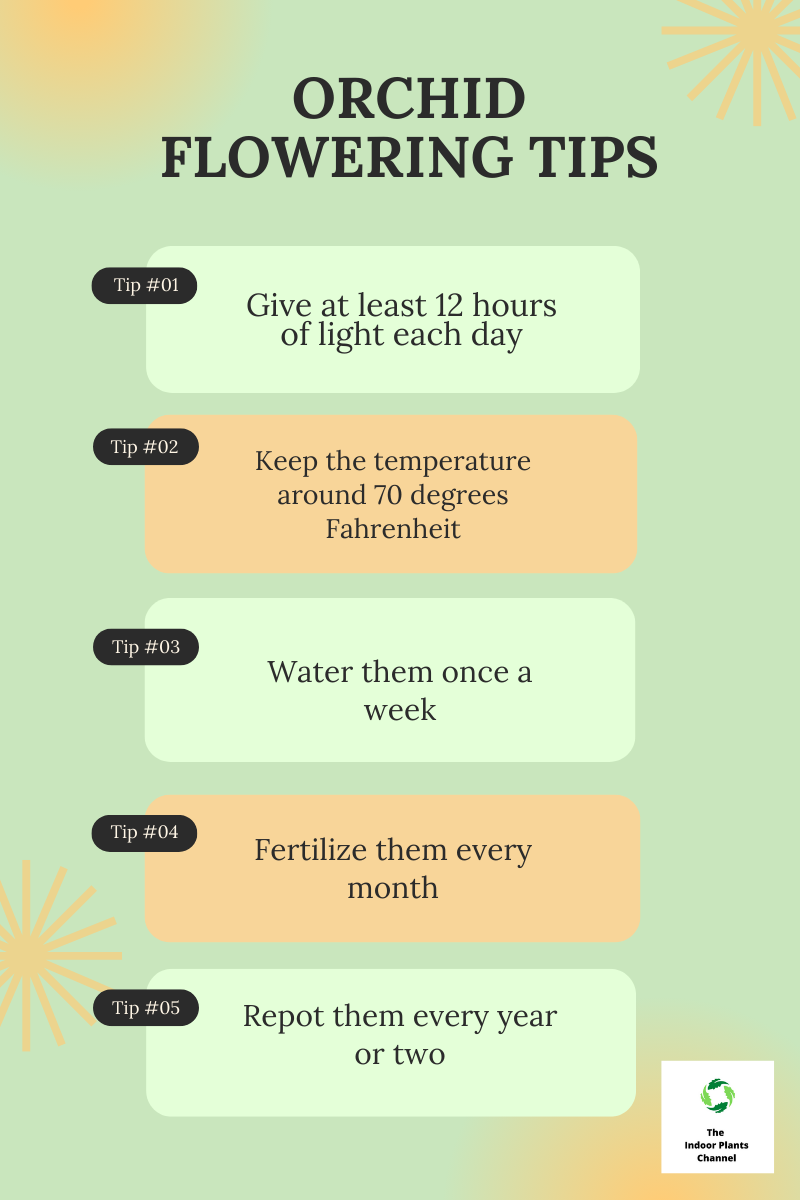
Frequently Asked Questions
What is an orchid?
Orchids are a type of flower that come in many different colors, shapes, and sizes. They are often found in tropical and subtropical climates and can also be grown indoors.
What are the different parts of an orchid?
The different parts of an orchid include the root, stem, leaves, flowers, and pollinia.
What are the roots of an orchid used for?
The roots of an orchid are used to anchor the plant to the ground and to absorb water and nutrients from the soil.
What is the stem of an orchid used for?
The stem of an orchid is used to support the leaves and flowers.
What are the leaves of an orchid used for?
The leaves of an orchid are used to absorb sunlight and to produce food for the plant.
What are the flowers of an orchid used for?
The flowers of an orchid are used to attract pollinators such as bees, birds, and butterflies. The flowers are also used to produce seeds.
What are the pollinia of an orchid used for?
The pollinia of an orchid are used to transfer pollen from the male to the female reproductive organs.
Bonus Tips
- Hang your orchid from the ceiling to add a touch of elegance to any room.
- Place your orchid on a windowsill to enjoy its beauty and natural fragrance.
- Use your orchid as a centerpiece on your dining room table.
- Place your orchid in your bathroom to create a spa-like atmosphere.
- Give your orchid a new home by potting it in a decorative planter.
- Water your orchid regularly, but check the mix first to see if it needs water.
- Also, be sure to fertilize your orchid regularly to keep it healthy and blooming.
Conclusion
If you’re looking for the ultimate guide to orchids, you’ve come to the right place. In this post, we covered everything you need to know about these beautiful flowers, from how to care for them to the different types of the beautiful plants.
Michelle Wilde
Related posts
5 Comments
Leave a Reply Cancel reply
![]()
About Michelle Wilde
Michelle Wilde is a stay-at-home mom and avid plant lover. Armed with a post-graduate degree in Computer Science (no kidding!), she loves researching plants and landscapes. When she is not caring for her 4 kids, she spends time on her passion for plants. She blogs at www.indoorplantschannel.com, the trusted source for indoor plants.
Learn more
Subscribe
* You will receive the latest posts and updates about indoor plants!
Search
Recent Posts
Categories
- Beginner Guides (10)
- FAQ (206)
- General (2)
- How-To Guides (212)
- Indoor Plants (214)
- Pest Management (2)
- Plant Problem Solutions (4)
- Seasonal Growing (2)
- Specialized Environments (2)
- Specific Plant Care (3)
- Technical Growing (2)
[…] you’re looking for an easy-to-care-for indoor plant that will add a touch of elegance to your home, look no further than the Orchidaceae family. These […]
[…] this blog post, we’ll take a look at the history of the orchid and how it has come to be such a popular flower […]
[…] looking for a beautiful and unique flower to add to your home, you can’t go wrong with an orchid. But before you run out and buy one, it’s important to know how to properly plant and care for […]
[…] type of soil. For example, cacti and succulents need a very different type of soil than ferns or orchids. Make sure to do your research and choose a soil that is specifically designed for the type of […]
[…] Orchid is a type of flower that is native to the Americas. Some people believe that orchids can help improve focus and concentration. […]